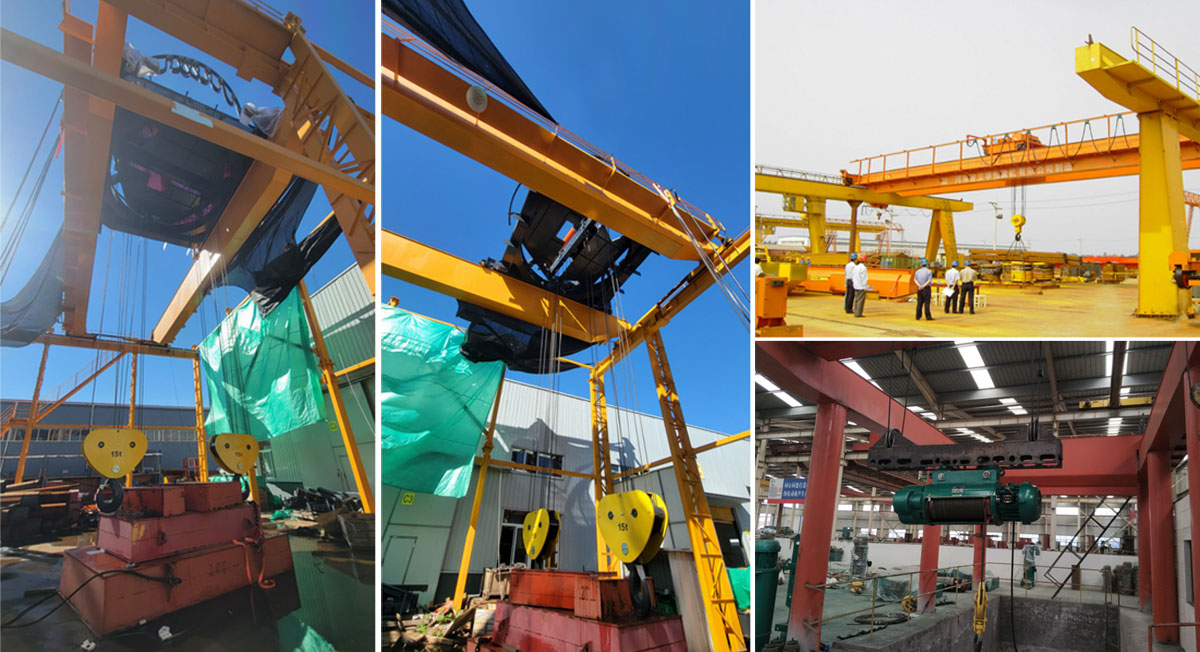Before the overhead is delivered, it is necessary to carry out preloading of the crane to clarify the characteristics of the various components and perform well. The goal of the test is to check the accuracy of electrical equipment, the strength and rigidity of each part of the structure and the operation of each part. We’ll show you a detailed introduction to how to do the no-load, static-load and dynamic-load test of the crane as follows:

1.1 The purpose of the test is to check the stability of each mechanism of the crane, the safety and reliability of electrics and the accuracy of wiring. Preset all safety protection equipment.
1.2 Content
1.2.1 Check whether each braking system is appropriate, the actual effect of the braking system should be good, and the gap of the braking system should be set.
1.2.2 Closely combine the switching power supply to check whether each part of the electrical equipment is good and proper, and whether there is electricity.
1.2.3 Lifting mechanism test, to raise and lower the lifting hook by pushing the pendant button. If there is no abnormality, it can be gradually accelerated, and the frequency can be adjusted continuously to check whether the transmission, the drum, and the braking system work normally. Also to check whether the speed control systems are in line with the basic principles.
1.2.4 Actual operation of the trolley lifting mechanism, changing speed of continuous forward and backward operation for many times, check that the trolley lifting mechanism should be excellent and no abnormality occurs, and the trolley limit switch is precise and flexible and reliable.
1.2.5 Trolley Travelling Mechanism: To make two continuous running on the full stroke of the track to check whether the rotation of the trolley wheels is stable and synchronous, and whether it is flexible in actual operation, hitting the power supply of the terminal equipment on both sides switch.
2.1 Purpose: To check the structure, compressive strength, stiffness, working characteristics and stability of the braking system of each part of the lifting equipment.
2.2 Content
2.2.1 After the no-load test, it is determined that the work of each organization is in good condition and meets the requirements, and the static load test can be carried out.
2.2.2 For overweight and experimental lifting equipment, the net weight should be 1.25 times of the rated load.
2.2.3 Static load test method
Start the hoisting test from 25% of the rated load, and then gradually increase to 50%, 70%, 100%, 110% and 125% of the rated load. Each time the hoisting object is lifted up and stayed at 100-150mm away from the ground for 5-10 minutes. It is not possible to land autonomously. During the overweight test, move the trolley across the main beam and use a level gauge to measure the deflection value under the main beam, which should not be less than 1/700 of the span of the main beam. After unloading, the hook is back to the top, and then the elastic deformation value of the main beam is measured. There should not be a plastic deformation on the main beam.
3.1 Purpose: To check the operation status of each part of the lifting equipment, to carry out careful and necessary adjustments to each mechanism, so that each mechanism can meet the technical standards.
3.2 Test principle
3.2.1 The dynamic load test shall be carried out after passing the static load test
3.2.2 Within the allowable standard of the situation, with a steady load of 110%. Carry out various tests on the lifting mechanism.
3.3 Testing method
3.3.1 The hoisting mechanism is continuously adjusted 3 times to check the working condition of the braking system and the positioning system.
3.3.2 The trolley mechanism reciprocates twice to check the working conditions of each part of the trolley, and the accuracy and stability of the positioning accuracy.
3.3.3 The long travelling mechanism moves back and forth in the whole field of the track to check the operation status of each part of the lifting mechanism, the accuracy and stability of the travelling limit switch.
3.3.4 Under the condition of 110% load of the crane, do 10-15 minutes of collaborative test and carry out the brake system test. Before the test and after the test, check the working conditions of each part of the crane. After the test is completed, all the problems found by each mechanism should be treated and solved by symptomatic treatment, and documented.
Previous: What is a Jib Crane
Next:What Is EOT Crane?